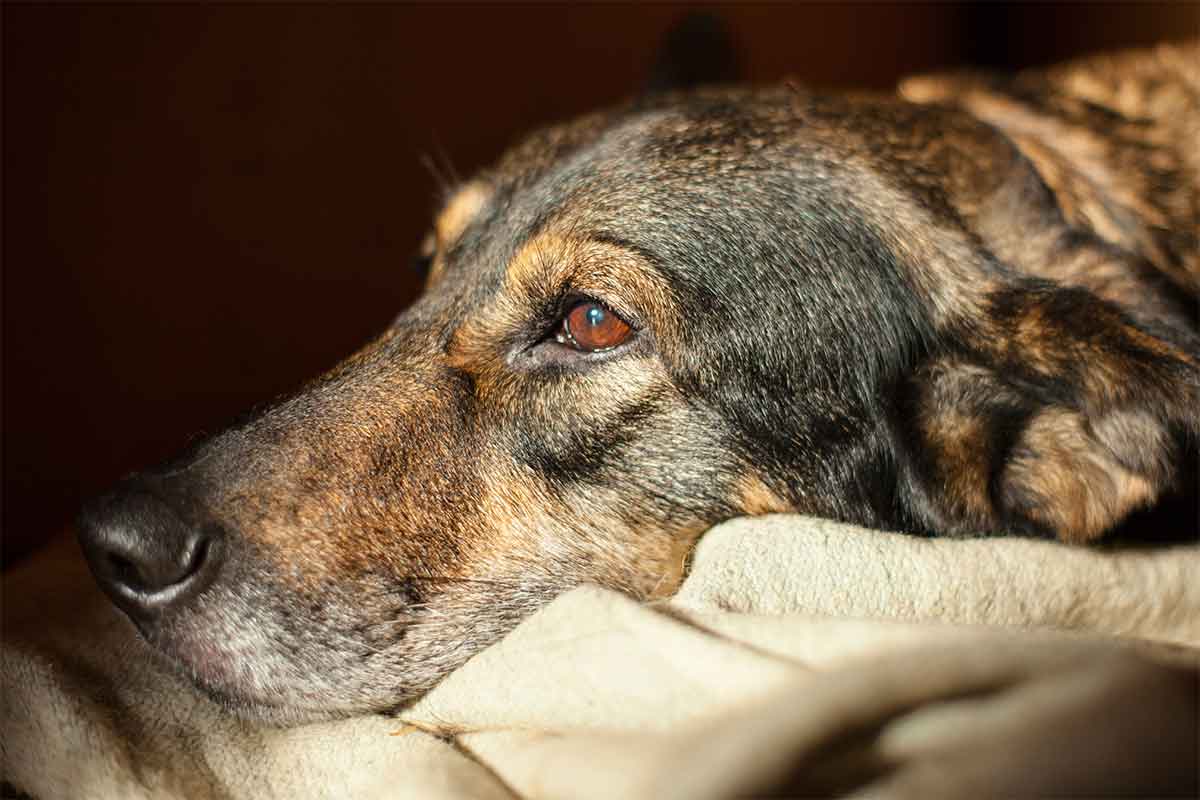My grandfather and his dog, Trimmer, a Redbone Coonhound, went about their daily routine of feeding the cows. When they didn’t come home at their normal time, my uncle and a neighbor went to look for them. They found my grandfather slumped against an old oak tree where he had collapsed from a fatal heart attack. Trimmer lay next to him, his head resting on my grandfather’s chest. Uncle Dusty and Mr. Bass had an emotional ordeal because Trimmer refused to let anyone near.
Mother says, “Trimmer changed. He trotted around the house, trailing, searching for Dad. He howled, more than normal, low mournful howls; he lay with his head on his paws with a sorrowful expression on his face, and he stayed under that old oak tree. I think he grieved himself to death.”
The loss of a loved one, two-legged or four, is an emotionally devastating part of life for people and may be equally heartbreaking for many pets. We humans can verbally express our emotions, but unfortunately we can’t have a heart-to-heart talk with our pets about difficult passages in life. However, with compassion, patience and understanding we can help them through their grief.
When Pets Mourn
We’re still learning about animal emotions but it’s widely recognized that animals grieve, and many researchers have studied animal grief for decades. The grieving process varies from the individual animal and the relationship to the deceased. Some pets may display multiple signs of grief while others show no signs of mourning. Pets form bonds with people and other companion animals in the home. Some animals bond deeply with other animals and may experience heightened anxiety or stress with the loss. Because of the change in social dynamics, they may search frantically for the deceased or sleep in their place.
Signs Of Grief
A 2016 study led by Jessica Walker of the New Zealand Companion Animal Council found that dogs and cats experienced approximately four behavior changes when a companion animal died. The changes lasted between two and six months, depending on the behavior.
One of the most common behaviors observed was in affectionate behavior, with 74 percent of dogs and 78 percent of cats showing changes. Of those, 61 percent of dogs and 62 percent of cats were considered more demanding of attention or more clingy or needy.
Sixty percent of dogs exhibited changes in territorial behavior, with 30 percent seeking the deceased’s favorite spot. Sixty-three percent of cats displayed territorial behavior changes, with 36 percent seeking the deceased’s favorite spot.
Cats had a much greater change in vocalizations—43 percent increase in frequency and 32 percent with increased volume. Dogs showed a 27 percent increase in whining and whimpering.
The following seven behavioral categories were studied:
- Affection (increased, decreased, clingy/needy, or withdrawn)
- Territoriality
- Vocalization (frequency and volume)
- Aggression
- Sleeping (increased, decreased or different locations)
- Elimination
- Feeding (more, less, and speed of eating)
Cats who don’t eat for a few days are vulnerable to hepatic lipidosis, a potentially fatal condition. Your veterinarian can suggest ways to stimulate your cat’s appetite. If your pet experiences weight loss, ongoing depression or worsening health issues, schedule a trip to your vet.
Easing Pet Grief
When a special person or a cherished animal companion dies, the loss and sadness affects the survivors. Compassionately guiding your pet through grief offers a sense of healing and comfort.
- Let your pet see, sniff, and investigate the body of the companion, if possible, to better understand the occurrence.
- Maintain a normal routine (meals, play, walks)
- Give extra time and attention, 30 minutes cuddle time, or extra walks.
- Don’t rush to add a new pet—this could worsen the behavioral changes or stress. Allow your pet, and yourself, time to adjust to the new “normal.”
Grief is a painful process and it is heartbreaking to watch our beloved pets undergo the stressful experience. Grief is our expression of loss from a loved one’s passing and how we honor the depth of our love. By recognizing grief in animals, including companion pets, and allowing them their individual expression of love and sorrow, we can become better advocates for their welfare and improved quality of life—through which we may find a deeper comfort ourselves.
This article was reviewed/edited by board-certified veterinary behaviorist Dr. Kenneth Martin and/or veterinary technician specialist in behavior Debbie Martin, LVT








